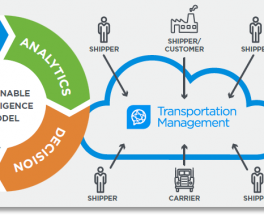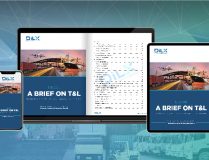In today’s fast-paced world, the ability to rapidly evaluate multiple scenarios and drive smart business decisions can be the difference between success and failure, so how do you harness new data sources to boost business planning and can you quickly analyze the new data and transform it into actionable insights to accelerate your supply chain and planning initiatives?
Advanced Analytics Are Everywhere!
The ability to analyze performance and determine the root-cause of issues has become standard functionality in many of the devices we use today.
For many years, automobiles have provided the capability to determine why a dash light is on through fault code readers.
Today it seems like you can buy just about any type of device that supports analytics including;
- Toothbrushes that analyze your brushing habits and alerts you to ways to maximize brushing through your smartphone;
- Wristwatches that tracks your every motion and provides performance metrics to help you meet your health and fitness goals;
- Refrigerators that monitor product usage and recommend when to buy milk or suggests new products based on actual consumption data; and
- Swimming pool control systems that automatically adjust chemical levels based on your desired water chemistry and immediately alert you to potential issues or equipment failures.
Analytics are literally everywhere. They are a part of our personal lives and are quickly becoming a major part of our professional lives as well.
Open any supply chain periodical, blog, or report and chances there is a discussion about the importance of analytics.
At its most basic level, supply chain analytics is the application of mathematics, statistics, predictive modeling and machine-learning techniques to find meaningful patterns in the vast mountains of data produced by enterprise systems and external sources.
As we tap into both structured and unstructured data sources, advanced analytics help us draw conclusions about demand, inventory, production and distribution operations to quickly drive more informed business decisions.
An important goal of a supply chain analytics initiative is to enable better business decisions that improve operating results and allow you to be more responsive to customer needs.
View the Webcast: Accelerate Supply Chain Performance Using Advanced Analytics
The following is a quick checklist of capabilities you should look for to support your advanced analytics initiative:
- Supply Chain Master Data Management (MDM): Provides consistent, harmonized, standardized and managed data across your complete supply chain including suppliers, customers, and trading partners
- Common Data Platform: Enables visibility and performance measurement of cross-functional processes and collaboration with trading partners
- Data Discovery: Provides the ability to use artificial intelligence and machine learning to mine internal and external data sources, including IoT and Big Data, to discover hidden patterns and trends
- In-Memory Processing: Enables fast response times to analytic operations
- Cloud-Based: Enables rapid deployment and flexible scalability
- Mobile Device Support: Provides 24×7 visibility to supply chain operations and powerful collaborative capabilities to drive analysis and fast response
- Configurable User Interface: Supports cross-functional analysis requirements
- Process Automation: Uses collaborative work-flows, configurable limits and intelligent alerts to improve response time for cross-functional decision-making and execution; frees up resources to focus on higher value-added activities
- Advanced Visualization: Provides the ability to view data and analysis output numerically and graphically in multiple units of measure, over various time-frames and at different aggregations to support all analysis requirements
- Capabilities to Supports All Five Levels of Analytics:
- Descriptive: Reports & Dashboards, Clustering & Association, Pattern-Based Analysis
- Diagnostic: Root Cause Analysis, Simulation, What-If Analysis, Segmentation
- Predictive: Simulations, What-If Scenarios, Sensitivity Curves, Statistical Forecasting
- Prescriptive: Deterministic and Stochastic Optimization, Tradeoffs
- Cognitive: Machine Learning, Automated Resolution, Artificial Intelligence, Smart Advisors
Author – Henry Canitz
Courtesy of http://www.supplychain247.com/article/better_supply_chain_decisions_with_advanced_analytics































